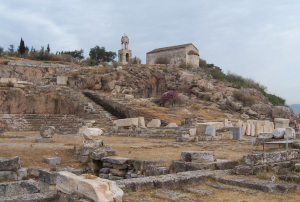Desacralised Eleusis. Contemplating the Impacts of Non-Restoration on a Major Classical and Poetic Locus
Abstract
Classical Eleusis is a major archaeological site of Greece and Greater Athens which enjoyed global fame in antiquity as hub of the Eleusinian Mysteries plus as seat of the age-long worship of goddess Demeter and her daughter Persephone. Following its irreverent treatment, which began after the establishment of Modern Greece in 1830, this paper proposes a new, sustainable approach to archaeological landscapes and sites based on restoration plus the artistic 'translation' of their spatial qualities. The Eleusis sanctuary appears to have fallen victim to a special, implicit compromise between, on the one hand, the national industrialist class, and on the other, the archaeological establishment, which has tolerated manufacturing in the Thriasian Plain, including the immediate vicinity of the Eleusinian sanctuary. As the area was being turned into the core location of Greek industrial development, the Eleusinian sanctuary was being fully recovered. However, throughout this ‘compromise and failure discourse,’ it should be remembered that enormous as well as continuous effort has been bestowed upon the protection of cultural heritage since the establishment of the Greek State. Embracing a ‘poetic’ methodology, deemed suitable to the genius loci of Eleusis, the outlook here eschews the isolated straightforwardness of architectural history, archaeological data, restoration precedents and building details, to explore the pulsations of Eleusinian space as a Thalesian entity 'full of gods.' The paper first, discusses the area’s profanation as illustration of a specific interaction between modernity and antiquity. Second, it unveils some important spatial qualities, including what is proposed here as ‘spatial pliability,’ which were destroyed around Eleusis and the Sacred Road linking it to classical Athens. Third, it enquires if partial restitution is still possible through cultural and urban design policies. Finally, it advances the hypothesis that timely restorations could potentially safeguard heritage sites threatened by industrial development or other noxious land uses.

Full Text:
PDFDOI: http://dx.doi.org/10.26247/aura3.10
Refbacks
ISSN: 2623-3428 (digital), 2623-3436 (print)
© 2018-2020 National and Kapodistrian University of Athen, Department of History and Archaeology.



